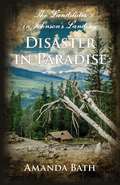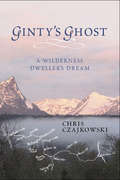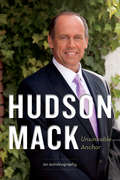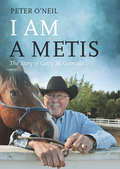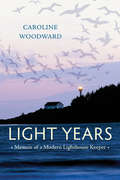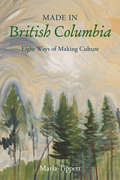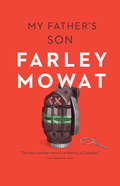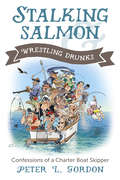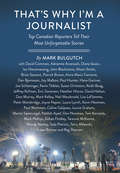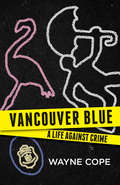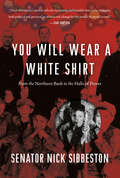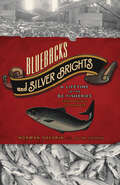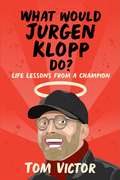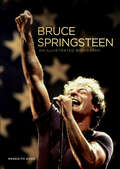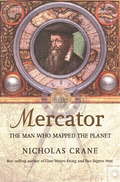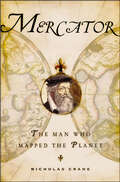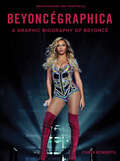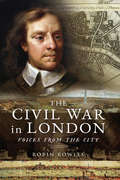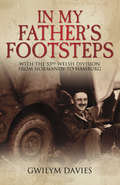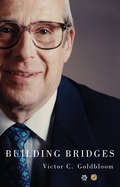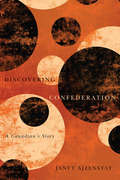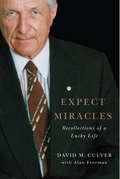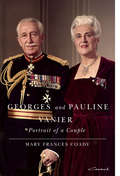- Table View
- List View
Disaster in Paradise
by Amanda BathOn the morning of July 12, 2012, Mandy Bath left her picturesque home and garden in Johnson's Landing, BC, for a day trip to nearby Kaslo. She had no forewarning of what the placid summer day would bring. But just over an hour later, a massive landslide tore into the community, destroying her home and killing four people: Valentine Webber, aged 60, and his daughters, 22-year-old Diana and 17-year-old Rachel, along with 64-year-old Petra Frehse. Returning the next day to search for her cat, Mandy narrowly avoided being buried beneath a second slide. Disaster in Paradise tells a story of survival, grief and recovery, as Mandy and the other residents of Johnson's Landing gradually rebuild their community in the wake of the tragedy. Mandy eloquently details her own experience of trauma and healing, and weaves in the stories of other residents and volunteers in the rescue and recovery missions as the community bands together to collectively mourn their loss. The story is grounded by the author's intimate knowledge of the Johnson's Landing community, but also reflects the greater themes of loss, perseverance and bravery that arise in natural disasters everywhere.
Ginty's Ghost
by Chris CzajkowskiAfter nearly three decades of wilderness dwelling far from neighbours and roads, with the nearest community accessible only via float plane or days of hiking, Czajkowski purchases a derelict homestead with rough road access at Ginty Creek, an hour's drive south of Anahim Lake. Although the property is mostly swamp and the packrat-infested buildings are uninhabitable, the location affords beautiful views and abundant wildlife-and the asking price is within her budget.Ginty Creek was named for Ginty Paul, the eccentric recluse who had previously owned the property. Some locals remember Ginty affectionately, while others feared her volatile temper or refused to step into her house for fear of being served "chicken poop tea." She had an open-door policy to all of her animals-the chickens would sleep with her and the bedroom doubled as a maternity ward for dogs, cats, goats and sheep. Intrigued by the stories,Czajkowski tracks down a pile of Ginty's letters and documents. These, combined with many fond, bitter and bizarre anecdotes gleaned from interviews with area residents, are all woven into the account.As Czajkowski chronicles the many challenges of settling into her new home, it becomes clear that she and Ginty have more than just a piece of land in common. They also share a spirit of independence and resourcefulness, as well as an unwavering desire for a solitary life immersed in the spectacular landscapes of British Columbia.
Hudson Mack
by Hudson MackFor decades, Hudson Mack has been the face of television news on Vancouver Island. In 2004, when he "crossed the street" from CHEK to The New VI, it was an industry-wide sensation. As he recalls that life-changing event in this autobiography he admits he wasn't sure where his new path might lead. CHEK was established, respected and popular in Victoria, but its senior management had passed Mack over for promotion to news director, more than once. The New VI was high-budget and original, but hadn't exactly earned a reputation for professionalism, especially after one of its anchors dropped an F-bomb on the air. When New VI management offered Mack the chance to rebuild and lead its news department, he couldn't resist the chance to rescue the floundering news program and signed on.Ten years later, after revamping The New VI and leading it to success as A-Channel and then CTV, Mack left the station. "Time is right for a change," he told dismayed viewers at the time. It was true; changes were happening, but there's more to the story, and in Hudson Mack, the broadcast veteran reveals the rest of the truth.And not just career-related truths. There's more to Mack than what you see on TV, and in this memoir he shares his personal stories as well as his professional ones. He tours through some of the lighter moments of his life and career-for example, the day of the royal visit, when Prince Philip put Mack's wife Patty in a very awkward position-but doesn't balk at sharing the tragedies, and also tells of his older brother's accidental shooting and the loss of his father and sister to cancer.Honest, unabridged and told with true journalistic integrity, Hudson Mack is a fix for those who miss Mack appearing on their TVs for the nightly newscast, and explains why he no longer does, at least for now.
I Am a Metis: The Story of Gerry St. Germain
by Peter O'NeilGerry St. Germain's story begins in "Petit Canada" on the shores of the Assiniboine, growing up with his two younger sisters, his mother and his father-a shy Metis trapper and construction worker who sometimes struggled to put food on the table. St. Germain was initially troubled in school, scrapping with classmates and often skipping out to shoot pool, but an aunt and uncle funded his tuition to Catholic school, where a nun recognized his aptitude for math and encouraged him to pursue his dreams. He would go on to become an air force pilot, undercover policeman and West Coast chicken farmer. Business gave way to politics, and in 1988 he became one of a tiny number of Aboriginal Canadians named to a federal cabinet. That milestone was just one of many for a man who played a critical role in Canada's Conservative movement for a generation.From the Brian Mulroney era to the roller-coaster leadership of Kim Campbell, then to the collapse of the Progressive Conservative Party in 1993 and the subsequent rebuilding of the movement under Stephen Harper, St. Germain remained a trusted confidant of prime ministers and a crucial and often daring behind-the-scenes broker in bringing warring factions together. But he is most proud of his efforts during his later years in the Senate, when he was a quiet hero to Canada's Aboriginal community. He spearheaded major Senate reports on key issues like land claims and on-reserve education during the Harper era, when there were few friendly faces for First Nations leaders on Parliament Hill. That role reflected St. Germain's profound determination to help people who are still dealing today with the brutal legacy of residential schools and the paternalistic Indian Act. Memories of his humble beginnings, and the shame he once felt over his Metis heritage bubbled to the surface in his final address to Canada's Parliament in 2012, when he said in a voice quaking with emotion: "I am a Metis."
Light Years
by Caroline WoodwardIn 2007, Caroline Woodward was itching for a change. With an established career in book-selling and promotion, four books of her own and having raised a son with her husband, Jeff, she yearned for adventure and to re-ignite her passion for writing. Jeff was tired of piecing together low-paying part-time jobs and, with Caroline's encouragement, applied for a position as a relief lightkeeper on a remote North Pacific island. They endured lonely months of living apart, but the way of life rejuvenated Jeff and inspired Caroline to contemplate serious shifts in order to accompany him. When a permanent position for a lighthouse keeper became available, Caroline quit her job and joined Jeff on the lights. Caroline soon learned that the lighthouse-keeping life does not consist of long, empty hours in which to write. The reality is hard physical labour, long stretches of isolation and the constant threat of de-staffing. Beginning with a 3:30 a.m. weather report, the days are filled with maintaining the light station buildings, sea sampling, radio communication, beach cleanup, wildlife encounters and everything in between. As for dangerous rescue missions or dramatic shipwrecks--that kind of excitement is rare. "So far the only life I know I've saved is my own," she says, with her trademark dry wit. Yet Caroline is exhilarated by the scenic coastline with its drizzle and fog, seabirds and whales, and finds time to grow a garden and, as anticipated, write. Told with eloquent introspection and an eye for detail, Light Years is the personal account of a lighthouse keeper in twenty-first century British Columbia--an account that details Caroline's endurance of extreme climatic, interpersonal and medical challenges, as well as the practical and psychological aspects of living a happy, healthy, useful and creative life in isolation.
Made in British Columbia
by Maria TippettIs there such a thing as British Columbia culture, and if so, is there anything special about it? This is the broad question Dr. Maria Tippett answers in this work with an assured "yes!" To prove her point she looks at the careers of eight ground-breaking cultural producers in the fields of painting, aboriginal art, architecture, writing, theatre and music. The eight creative figures profiled in Made in British Columbia are not just distinguished artists who made an enduring mark on Canadian culture during the twentieth century. They are unique artists whose work is intimately interwoven with British Columbia's identity. Emily Carr portrayed BC's coastal landscape in a manner as unique as her lifestyle. Bill Reid's carvings, jewellery and sculpture stand as a contemporary interpretation of his reclaimed Haida heritage. The name Francis Rattenbury is less known than The Empress Hotel in Victoria, one of many prominent BC buildings he designed, while Arthur Erickson's modern architectural contributions are recognized worldwide. Martin Allerdale Grainger's experience in the BC woods in the early days of hand-logging inspired him to write one of the undisputed classics of BC fiction, Woodsmen of the West. Jean Coulthard struggled for respect as a female composer during the 1920s and 1930s in British Columbia but eventually proved her extraordinary musical talents internationally. George Woodcock left Britain in 1949 to forge his career as an influential author, editor, mentor and tireless promoter of literary scholarship in the province, while playwright George Ryga, the son of Ukrainian immigrants, exposed the anguish and reality of life for Native women in our cities with his 1967 play, The Ecstasy of Rita Joe. Featuring images of the artists and their works, Made in British Columbia presents a history of the treasures found in our galleries, concert halls, theatres, museums, libraries and streetscapes, and explores the legacy of a cultural tradition as unique as the place that nurtured it.
My Father's Son
by Farley MowatThe follow-up to And No Birds Sang, Farley Mowat's memoir My Father's Son charts the course of a family relationship in the midst of extreme trial. Taking place during Mowat's years in the Italian Campaign, the memoir is mostly told through original letters between Mowat and his mother, Helen, and his father, Angus, a World War I veteran and librarian. Written between 1943 and 1945, the correspondence depicts the coming of age of a young writer in the midst of war, and presents a sensitive and thoughtful reflection of the chaos and occasional comedy of wartime.First published in 1992, Douglas & McIntyre is pleased to add My Father's Son to the Farley Mowat Library series, which includes the other recently re-released titles Sea of Slaughter, People of the Deer, A Whale for the Killing, And No Birds Sang, Born Naked and The Snow Walker.
Stalking Salmon and Wrestling Drunks: Confessions of a Charter Boat Skipper
by Peter L. GordonEach fisherman steps onto the docks, sees Peter Gordon's boat the MV Kalua, glances at the other members of the charter and feels a rush of anticipation. The challenge is on to see who will catch the biggest fish.Told with a skipper's authority, Stalking Salmon and Wrestling Drunks recounts the highs and lows of fishing with tourists, including dealing with rowdy guests, bad weather, near death experiences, lost fish, tangled lines, and sometimes even tragedy. Gordon's humour and tenacity shines through each tale to create an energetic memoir that will appeal to fishing enthusiasts, observers of human behaviour, travellers and anyone interested in recreational fishing.Stalking Salmon and Wrestling Drunks exemplifies the quintessential BC West Coast experience; however, the stories are much more than great fishing trips. As the skipper, each charter brought Gordon the challenge of "bringing together the most unlikely people, people who would never choose to spend four or five hours together." It might be as simple as children or jobs, but Gordon thrived on deeper, more powerful connections like re-introducing two men who had been in the same concentration camp together during World War II and hadn't seen each other since.For Gordon, each charter was not only about a skipper and his crew, but was an opportunity to encourage each person to have an exceptional experience. Stalking Salmon and Wrestling Drunks tells each story with precision, an eye for detail and the good-natured humour that carried the author through each day on the rough seas. This collection is a delightful balance between the adventure of open-water fishing, helping people cross the last item off their bucket list and making life-long friends in the process.
That's Why I'm a Journalist
by Mark BulgutchNews stories are like collective memories, encapsulating the most iconic moments in recent history around the world. But to those who work in journalism, up-close involvement with these stories can also be life-changing. In That's Why I'm a Journalist, veteran broadcaster Mark Bulgutch interviews 44 prominent Canadian journalists, who each share their behind-the-scenes accounts of some of the most memorable stories of their careers and describe the moment that made them say to themselves, "That's why I'm a journalist."Although many of the contributors' stories are related to their roles in the most high-profile events of the 20th and 21st centuries, from the fall of the Berlin Wall to 9/11, here too are reflections on quieter and more intimate moments that had a deep personal impact. Peter Mansbridge talks about a trip to Vimy Ridge on the hundredth anniversary of World War I, Adrienne Arsenault recalls bringing together old friends separated by the Israeli-Palestinian conflict, Terence McKenna recounts what it's like to worry about being kidnapped as part of the job and Wendy Mesley reflects on the satisfaction of asking tough questions-and uncovering the truth.Together, these enthralling and varied accounts provide an intimate understanding of the people we see on camera and hear on the radio. As Bulgutch argues, modern journalism is undergoing existential threats. News has never been more accessible yet, paradoxically, important news has become harder to find, often buried by pseudo-news of celebrity, lifestyle tips and the latest viral video of a water-skiing squirrel. The stories in this book serve as reminders of the importance of real journalists and real journalism.
Vancouver Blue
by Wayne CopeWayne Cope has TV to blame for starting him on his long career as an officer of the Vancouver Police Department. He grew up watching gunslingers like James Arness and Richard Boone, inspiring him to join up even before he finished college-and his real-life working career has turned out to be more exciting than he could have hoped. In his years on the force from 1975 to 2006, Cope has seen practically everything on the ever-changing streets of Vancouver-he's worked as a jailer and a traffic cop, talked people down from bridges, worked on dog squads, gone undercover in pursuit of serious criminals and worked the historical unsolved homicide unit. And behind each assignment, there's a story, a joke or a revealing insight into the realities of police work. In Vancouver Blue, Cope shares pearls of wisdom and anecdotes inspired by his years on the force, describing some of the most outlandish costumes for undercover drug purchases, many different ways to total a brand-new motorbike, and the precise ratio of competent officers to idiots in any given squad. He also sheds light on the behind-the-scenes life of VPD officers and their off-duty antics. Cope also provides detailed accounts of some of his most fascinating cases, like the sensational Centrefold Murder and the infamous killing of the Stanley Park flamingoes. For those looking for even more insight into the mind of a detective, Cope has created a cipher with a theme inspired by the book, offering a reward of five Canadian Silver Maple Leaf coins to the first person to break the code.
You Will Wear a White Shirt
by Nick SibbestonGrowing up in a remote Northern community, Nick Sibbeston had little reason to believe he would one day fulfill his mother's ambition of holding a career where he would "wear a white shirt." Torn away from his family and placed in residential school at the age of five, Sibbeston endured loneliness, callous treatment and sexual assault by an older boy, but discovered a love of learning that would compel him to complete a law degree and pursue a career in politics.As a young, firebrand politician, Sibbeston played an instrumental role during a critical moment in Northwest Territories politics, advocating tirelessly to support the economic and political development of First Nations people in the North, and participating in early discussions of the separation of Nunavut. Sibbeston's career advanced in great strides, first as an MLA, then one of Canada's first Aboriginal lawyers, then as a cabinet minister and eventually premier of the Northwest Territories. Finally, he was appointed to the Senate of Canada, where he continues to represent the people of Canada's North, not least in advocating for the generations affected by residential school policies.Although his years at residential school compelled Sibbeston to fight tirelessly for the rights of Aboriginal northerners, they also left a mark on his mental health, fuelling continual battles with anxiety, depression and addiction. It was only in later life that healing began to take place, as he battled his demons openly, supported not just by the medical community but also by his strong faith and the love of his wife and family.
Bluebacks and Silver Brights: A Lifetime in the B.C. Fisheries from Bounty to Plunder
by Norman Safarik Allan SafarikA captivating memoir set during the pinnacle of West Coast fishingMore than a history of the Vancouver fishing industry, Bluebacks and Silver Brights is a collection of great adventures set on the Pacific coast. With dozens of salty tales of hardworking and hard-living fisherman and fish industry workers, this is Norman Safarik’s story of West Coast fishing from the Gulf of Georgia to Prince Rupert, with a detour to New York’s old-time fish markets. With wisdom and insight, Safarik’s story is also an ecological warning, recalling the lost bounty of Canada’s natural resources of a century ago, and their possible extinction today at the hands of government mismanagement and overfishing.
What Would Jurgen Klopp Do?: Life Lessons from a Champion
by Tom VictorTHE PERFECT GIFT FOR FOOTBALL FANSThere's no one quite like Klopp. Players love him, Liverpool fans love him - even those who should hate him, want a hug from him. He's charismatic, charming, a master tactician and his unrivalled passion for his team and the game has made him one of football's most beloved personalities.So, let's face it, in these uncertain times, we all could do with being a bit more like Klopp. The perfect gift for any football fan in your life; from how to make the perfect dinner-party klopptails to cultivating your Top of the Klopps playlist - this is a celebration of football's greatest manager and a guide to winning in your own life.'All of us have to do whatever we can to protect one another. This should be the case all the time in life, but in this moment I think it matters more than ever.' - Jurgen Klopp
Bruce Springsteen: An Illustrated Biography
by Meredith OchsA biography of the Boss from the streets of Freehold to rock stardom to the Broadway stage, loaded with performance and candid photos.Through story, images, and memorabilia, Bruce Springsteen: An Illustrated Biography chronicles the life of The Boss—one of America’s favorite rock stars and one of the biggest-selling artists in history. Springsteen’s monolithic music career spans over a half-century, from 1968 to the present, and has included dozens of tours and awards including twenty Grammys. Incredibly, his stage presence, star power, and musicianship is as strong as ever as he consistently sells out live performances. This book showcases his life both on and off the stage.This edition includes a new chapter covering Springsteen on Broadway
Mercator: The Man who Mapped the Planet
by Nicholas CraneA biography of the genius who mapped the world and for ever changed the face of the planet - by a bestselling author.Gerard Mercator (1512-1594) was born at the dawn of the Age of Discovery, when the world was beginning to be discovered and carved up by navigators, geographers and cartographers. Mercator was the greatest and most ingenious cartographer of them all: it was he who coined the word 'atlas' and solved the riddle of converting the three-dimensional globe into a two-dimensional map while retaining true compass bearings. It is Mercator's Projection that NASA are using today to map Mars. How did Mercator reconcile his religious beliefs with a science that would make Christian maps obsolete? How did a man whose imagination roamed continents endure imprisonment by the Inquisition? Crane brings this great man vividly to life, underlying it with colour illustrations of the maps themselves: maps that brought to a rapt public wonders as remarkable as today's cyber-world.
Mercator: The Man who Mapped the Planet
by Nicholas CraneA biography of the genius who mapped the world and for ever changed the face of the planet - by a bestselling author.Gerard Mercator (1512-1594) was born at the dawn of the Age of Discovery, when the world was beginning to be discovered and carved up by navigators, geographers and cartographers. Mercator was the greatest and most ingenious cartographer of them all: it was he who coined the word 'atlas' and solved the riddle of converting the three-dimensional globe into a two-dimensional map while retaining true compass bearings. It is Mercator's Projection that NASA are using today to map Mars. How did Mercator reconcile his religious beliefs with a science that would make Christian maps obsolete? How did a man whose imagination roamed continents endure imprisonment by the Inquisition? Crane brings this great man vividly to life, underlying it with colour illustrations of the maps themselves: maps that brought to a rapt public wonders as remarkable as today's cyber-world.
Mercator: The Man Who Mapped the Planet
by Nicholas CraneAn enthralling biography of the man who created the first real map of the world and changed civilizationBorn at the dawn of the age of discovery, Gerhard Mercator lived in an era of formidable intellectual and scientific advances. At the center of these developments were the cartographers who painstakingly pieced together the evidence to create ever more accurate pictures of the planet. Mercator was the greatest of all of them-a poor farm boy who attended one of Europe's top universities, was persecuted and imprisoned by the Inquisition, but survived to coin the term "atlas" and to produce the so-called projection for which he is known. Devoutly religious, yet gripped by Aristotelian science, Mercator struggled to reconcile the two, a conflict mirrored by the growing clash in Europe between humanism and the Church.Mercator solved the dimensional riddle that had vexed cosmographers for so long: How could the three-dimensional globe be converted into a two-dimensional map while retaining true compass bearings? The projection revolutionized navigation and has become the most common worldview.Nicholas Crane-a fellow geographer-has combined a keen eye for historical detail with a gift for vivid storytelling to produce a masterful biography of the man who mapped the planet.
Beyoncégraphica: A Graphic Biography of Beyoncé
by Chris RobertsAn easy-to-read biography of “the most important and compelling popular musician of the twenty-first century,” includes infographics and photos (TheNew Yorker).Beyoncé needs no introduction. Singer, artist, activist and icon, she is worshiped by her many fans around the word.This stunning graphic biography tells the story of how a young singer from Texas transformed into a global superstar, celebrating the highlights and successes of her career through stunning new graphics, photographs and illustrations. Representing so much more than the pop industry, through philanthropy, politics and campaigning, Beyoncé has broken the mould of what it means to be a superstar—and that star just continues to rise.From costume changes to record sales, her impressive vocal range to her work off-stage, this original bio-graphic book charts the success of the icon who came to dominate the charts, our screens and even our wardrobes. An absolute must for any “Beehive” members and Beyoncé fans.
Restoration Plays and Players
by David RobertsIntroducing readers to the key texts, theatrical practice and context of late seventeenth-century drama, David Roberts combines literary and theatrical approaches to show how Restoration plays were written, performed, received and printed. Structured according to the 'life cycle' of the dramatic text, this book reproduces extracts from twenty-four of the most influential Restoration plays to provide readers with a comprehensive and colourful introduction to the period's drama. Roberts encourages readers to look beyond a limited canon of established plays and practice, and to see how Restoration Drama has been revived and adapted on the modern stage. Restoration Plays and Players is of great interest to undergraduate and non-specialist readers of seventeenth-century drama, Restoration literature and theatre studies.
The Civil War in London: Voices from the City
by Robin RowlesThe Civil War years of the 1640s were amongst the most tumultuous in British history. The conflict between King Charles I and Parliament strained and split the social fabric of the British Isles. People of all classes who had previously coexisted peacefully found themselves opposing each other on political, religious, and economic grounds. Society was literally 'by the sword divided'.Much has been written on the subject to date. This book is different. London is its focus, with key players such as the Lord Mayor, the livery companies, the Church, and citizens, viewed through the city's lens and the streets around St Paul's and Cheapside. In looking at seemingly everyday events, unusual questions are raised: for example, where can you find a little known statue of Oliver Cromwell; what happened to the Cheapside Cross; who was Nemehiah Wallington and why was he important?The result of a London walk devised by the author, the books learned yet accessible approach will appeal to anyone interested in a new way of looking at a popular event in history. Bookended by the death of a Tudor queen and the beheading of a Stuart king, its chapters walk us through what happened in-between.
In My Father's Footsteps: With the 53rd Welsh Division from Normandy to Hamburg
by Gwilym DaviesIn 1944-45, Capt. G.H. Davies served with the hard-fighting 53rd Welsh Division. He was an artillery officer in command of a battery of 25-pdr field guns and saw action from Normandy to the final surrender of Nazi Germany. Capt. Davies was present at the Normandy battles, the fierce fighting for s'Hertogenbosch and the Battle of Arnhem.During the course of the war, Capt. Davies kept a diary and also snatched a few photographs on his treasured camera. When the opportunity arose Capt. Davies liberated a camera from a fallen SS officer and, after the war, had the film developed. The film contained graphic images of the war from the German side of the line.Seventy years on from the events, the wartime diary, the photographs of the guns and the photographs taken by the dead SS officer were the inspiration for the son of Capt. Davies, television producer and writer Gwilym Davies, to undertake an emotional return to the battlefields, which his father had described in his diary.The result of that pilgrimage is an important new book which builds upon the wartime diary and the photographs to produce a powerful record of one man's war service with the guns of the 53rd Welsh Division. The book also contrasts the experience of Capt. Davies with those of the Germans on the other side of the line. Gwilym Davies is himself an accomplished photographer and his photographs of the 70th anniversary celebrations and the memorials provide a poignant counterpoint to the events of 1944.
Building Bridges
by Victor C. GoldbloomA pediatrician, provincial politician, and pioneer of interfaith dialogue, Victor Goldbloom (b. 1923) has led a rich and varied life. Deeply committed to social issues, his dedication to reconciliating French and English, federalists and sovereignists, Christians and Jews, and his understanding of public health, the environment, and minority communities are unparalleled. Born in Montreal, Goldbloom received his medical degree from McGill University in 1945. A practising pediatrician for many years, he entered public life in 1962 as a governor of the College of Physicians and Surgeons of Quebec and in 1966 was elected to the Quebec Legislature. In 1970 he became the first member of Quebec's Jewish community to serve in the provincial cabinet, under Premier Robert Bourassa. A minister of the National Assembly until 1979, Goldbloom served as Quebec's first environment minster, and later as municipal affairs minister and minister responsible for the Olympics Installations Board. In the early 1990s he became Canada's Commissioner of Official Languages. In Building Bridges - a collection of personal anecdotes, media coverage of his impressive career, and transcriptions of two historic speeches - Goldbloom recounts the details of his remarkable life and lifelong commitment to Quebec and to Canada.
Expect Miracles: Recollections of a Lucky Life
by David M. CulverExpect Miracles is the personal and professional story of a leader in the worlds of business and culture. David Culver narrates his journey from his upbringing in Montreal's Golden Square Mile, through his studies at McGill and Harvard, his army service during the Second World War, to his impressive rise at Alcan to become chairman and chief executive officer of one of Canada's leading multinational corporations. The memoir provides an inside look into the management of a global company with roots deeply planted in Quebec and offers pragmatic advice on how to grow talent, foster technology, and handle adversity in a far-flung organization. Anecdotes of meeting the likes of Margaret Thatcher, Henry Kissinger, and Jawaharlal Nehru, reveal the experiences of a strong corporate leader who continued to live a Montreal life, while never losing his interest in discovering the world. A man of many interests and talents, Culver reflects on his long love affair with architecture - and his efforts to restore and preserve Montreal's heritage by creating Maison Alcan - and how music and sport helped shape his life. Expect Miracles is evidence of Culver's positive outlook and belief that the most extraordinary things can happen when you least expect them.
Georges and Pauline Vanier
by Mary Frances CoadyGeorges and Pauline Vanier follows their lives and travels across the world - from Canadian military life to the League of Nations, from the inner circles of British government to their harrowing escape from Nazi-occupied France - detailing their disappointments and triumphs during social and political turbulence. With insight and sympathy, Mary Frances Coady tells their dramatic personal story. Revealing their remarkably vibrant personalities, she details the couple's support of the French resistance as well as Georges Vanier's pleas for the Canadian government to accept refugees fleeing Hitler's horrors and his effort to broaden immigration policy. She also recounts the importance of their religious convictions, their controversial standing among Quebecers, and their early advocacy of official bilingualism. An invigorating and well-told tale of their lasting legacies, Georges and Pauline Vanier is the definitive account of the enduring contributions the Vaniers made to the world and to their country.
